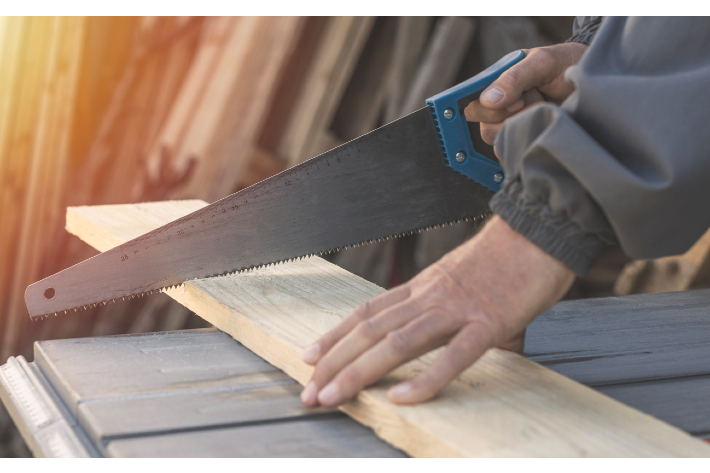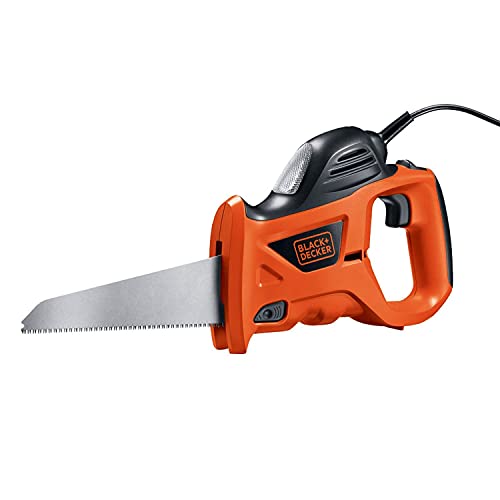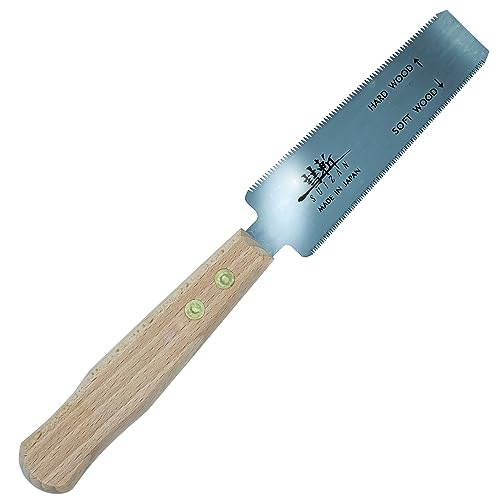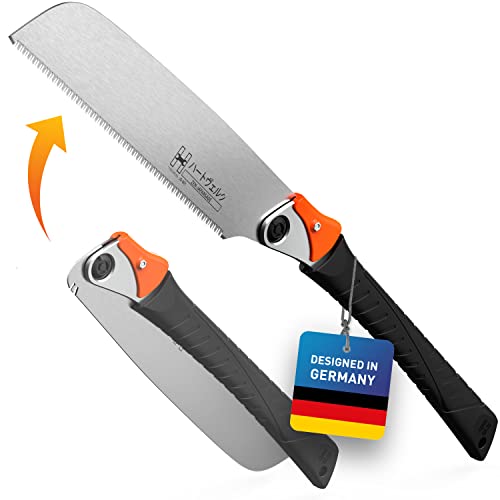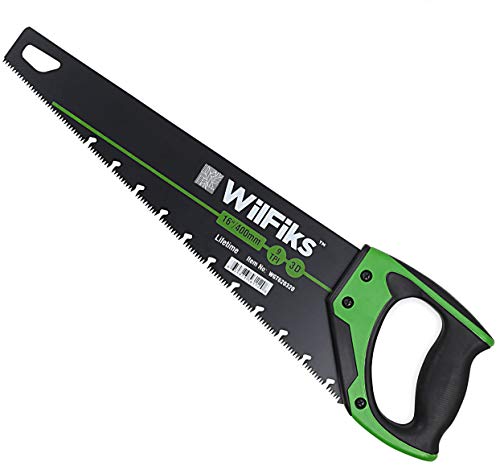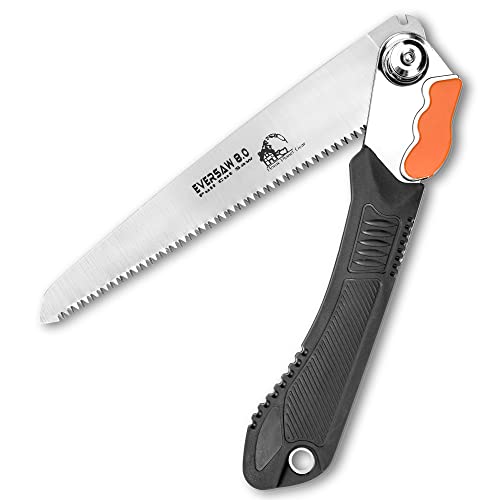- StoreProjects
- Free Plans and Projects
- Furniture Projects
- Jigs And Fixtures Projects
- Shop Projects
- SketchUp Models
- Shop Storage
- Workbenches
- Free Woodworking Downloads From Lee Valley
TechniquesToolsVideos- Premium Streaming Video Site
- Experts Guide to Gluing & Clamping Wood
- Mastering Built-In Furniture
- Simple Live-Edge Slab Table
- CNC – Designed for Woodworkers
- Milling Your Own Lumber
- Advanced Bandsaw Techniques
- I Can Do That! – Simple Woodworking Projects
- Woodwright’s Shop with Roy Underhill
- Tricks of the Trade
BlogOur content is meticulously curated through independent research, testing, reviews, and AI-driven recommendations, all designed to present you with the finest product choices. When you make a purchase through our links, it could result in us earning a commission.Prepare Your Craft Projects With the Best Wood Saws
Last updated: 6 Apr 2024
Our Top Picks
- Best Overall: BLACK+DECKER Electric Wood Saw Shop Now ➔
- Best Design: SUIZAN Japanese Wood Saw Shop Now ➔
- Premium Quality: HARDTWERK Zen Japanese Wood Saw Shop Now ➔
- Best Features: WilFiks Wood Saw Shop Now ➔
- Best Value: Home Planet Gear Wood Saw Shop Now ➔
View all ContentsReviewing the Quality Wood Saw in 2024
Best Overall
The first product on our list is the BLACK+DECKER Electric Wood Saw. This powerful and handy tool is perfect for a variety of different projects. You can cut wood, plastic, composites, and metal with this six-tooth saw because of its powerful 3.4 Amp motor.
The compact, lightweight design makes it easy to maneuver and transport, while the ergonomic handle ensures comfortable operation. Even more, the high-powered motor delivers up to 4600 SPM for quick, efficient cutting. We’ve chosen this model as the best among its competitors due to its versatility, durability, and convenience.
Pros
- Comfortable design
- Portable and lightweight
- Works with various materials
Cons
- Not suitable for hard materials
Best Design
Do you love working with wood, but hate the hassle of heavy, inefficient saws? If so, you need a SUIZAN Japanese Wood Saw. This flush-cut saw is much lighter, uses less power, and makes a cleaner edge, making it perfect for your woodworking project. The high-quality steel makes razor-sharp cuts, while the comfortable handle ensures easy maneuverability.
With its robust blade, this Japanese tool can easily cut through oak, sandalwood, ebony, mahogany, maple, walnut, and pine with ease — perfect for those larger jobs where you need a little extra kick. Plus, this product is crafted in an old Japanese town known for its craft-making tradition, so it’ll be built to last.
Pros
- Robust blade for hardwood and softwood
- Beginner-friendly, foldable design
- Requires less power than a standard saw
Cons
- Low-width blade
- Not marketed as rust-free
Premium Quality
The next product on our list is the HARDTWERK Zen Japanese Wood Saw. This handy tool is perfect for everything from cutting firewood to trimming branches and features a sharp, carbon-steel blade that makes your life easier!
The extra-light Super-Grip Rubber handle gives you a comfortable grip, even during extended use, and the unique pull-saw design requires less power and produces cleaner cuts. Whether you’re a professional landscaper or just need a good saw around the house, this stylish model is a perfect choice!
Pros
- Ensures extremely fine woodworking
- Easy to grip
- Requires minimal effort
Cons
- The blade may become dull
Best Features
Moving down, we have the WilFiks wood saw, which can handle all your precision cutting needs! This saw is designed for precisely cutting dovetails, miters, and tenons, making it ideal if you’re a framer, general contractor, or woodworker.
The induction-hardened teeth and extra secured blade make it safe to use, while the unique handle design allows for superior cutting angles. This wood saw will help you work quicker and more efficiently with three cutting surfaces and deep gullets. Don’t settle for less; use this high-quality cutting tool to get the job done!
Pros
- Cuts through wood quickly
- Durable construction for long-term use
- Safer blade assembly
- Superior cutting angle
Cons
- Harder to handle than larger blades
- May produce dust and debris
Best Value
With a medium-tooth 8-inch carbon steel blade and a triple-cut razor teeth design, the Home Planet Gear Wood Saw is built to last. You can easily cut through tree branches, bone, and PVC plastic up to 4 inches in diameter with this folding saw.
The ergonomic and non-slip design makes it easy and comfortable, even in the most challenging terrain. And when you’re done, the blade locks securely into place with the stronger gear lock, ensuring safe transport. If that’s not enough, this product comes with a full replacement warranty, so you can be sure it’s a wise investment!
Pros
- Multipurpose saw
- Safe to transport
- Full replacement warranty
Cons
- Difficult to use in tight spaces
Buying Guide: Wood Saws
With so many options available, it can be difficult to know which saw is right for you. In this buying guide, we’ll help you understand the different types of wood saws available and what to look for when choosing one.
What to Look for in a Wood Saw
Construction material
There are two types of wood saws: those with metal blades and those with carbide-tipped blades. Metal blade saws are less expensive, but carbide-tipped models stay sharper longer and resist wear better.
Tooth count
The number of teeth on a wood saw determines how fast it can cut and how smooth the cut will be. More teeth indicate a slower, smoother cut, while fewer teeth indicate a faster, rougher cut.
Blade length
The blade’s length determines how fast the saw can cut and how smooth the cut surface will be. A longer blade makes straighter cuts more easily than shorter ones but is more likely to bind in the cut.
Type of handle
Straight or pistol grips are the most common wood saw handles. A pistol grip is more comfortable to hold for long periods, but a straight handle gives you more control.
Motor power
When it comes to woodworking, the more powerful the motor, the better. But, in some instances, a less powerful motor may be beneficial. For example, if you’re going to be doing intricate work or working with very small pieces of wood, a lower-powered motor might give you more control over your cuts.
Types of Wood Saws
Hand saw
A hand saw is powered by the user rather than an external power source. The most common type is the crosscut saw, which is used to cut across the grain of the wood.
Backsaw
Hand saws with a strengthened spine running down the back of the blade are referred to as a backsaw. This makes it more rigid than a standard hand saw and allows for a more accurate cut, which is why it’s typically used for dovetails and tenons.
Bow saw
A bow saw is a type of handsaw that has a curved blade mounted on a frame. The blade is held in place by a tensioned wire or cord, allowing it to be used for curved or circular cuts.
Pruning saw
A pruning saw is a type of hand saw that is designed for cutting or trimming live plants and trees. The blade is normally curved and has sharpened teeth on both sides.
Hacksaw
A hacksaw is a hand saw that consists of a thin, flexible blade mounted on a frame. The blade is held in place by a tensioned wire or cord, allowing it to be used for making straight or curved cuts. Hacksaws are typically used for cutting metal or other hard materials.
Circular saw
A circular saw is a type of power saw that uses a blade that spins in a circle. Circular saws are commonly used to cut wood in straight lines.
Table saw
Table saws are a type of power saw that consist of a circular blade mounted on a table. They’re frequently used to make lengthy, straight cuts in lumber or other materials.
Miter saw
With a rotating arm and a circular blade, the miter saw is one of the most used types of power saws. These are typically used for making miters, or angled cuts, in wood or other materials.
What Kind of Wood Saw Do You Need?
If you’re working with softwoods, then a handsaw or coping saw will suffice. For hardwoods, you will need a power saw such as a circular saw or jigsaw.
Consider the sort of blade you’ll need when selecting a wood saw. Some blades are better for cutting softwoods, while others work better on hardwoods. If you’re unsure about which blade to choose, check your local home improvement store for help.
How Much Do Wood Saws Cost?
There’s a lot of variation in the price of wood saws, depending on the type and size. A small handheld saw may only cost around $30, while a larger powered saw could cost over $200. If you’re looking for a specific type of wood saw, such as a carving saw, the price will also vary depending on the quality and features.
People Also Ask
How do I choose a wood saw?
If you're doing general woodworking, a rip saw or crosscut saw will suffice. For more specific projects, such as cutting dovetails or miters, you'll need a specialty saw.
How do I use my wood saw?
To use a hand saw, place the blade on the wood and saw in a back and forth motion. If you're using an electric saw, make sure the blade is sharp and the teeth are pointing in the right direction. Place the blade on the wood and turn on the power. Then, just press it down and cut through the wood.
How do I sharpen my wood saw?
First, you need to find a saw sharpener. Once you've purchased a saw sharpener, read the instructions that come with it. Alternatively, you can sharpen your saw with a file.
How do I keep my wood saw from getting dull?
First of all, make certain you're cutting with a suitable blade for the material you're working with. Secondly, avoid cutting through nails or other metal objects. Finally, sharpen your saw regularly to keep the blade sharp.
Article Contributors
Read More About Popular Woodworking Reviews Team HereThe Popular Woodworking Review Team’s product reviews and comprehensive guides are here to help you select the best gear and tools to efficiently complete top-quality woodworking projects.
Popular Woodworking is reader-supported: When you buy through links on our site, we may earn an affiliate commission. Artificial Intelligence (large language models) may have been used in the research and creation of the content.
Questions about product testing or a specific articles should be sent to aimperiapt@gmail.com
Related Reviews
The Best Hand Saws for All Your DIY Projects and Camping Needs The Best Oscillating Saw Blades for Your DIY Projects 5 Best Japanese Pull Saws for Clean, Accurate Cuts Use the Best Sawhorses to Make Carpentry a Breeze A Cut Above the Rest: The Best Spiral Saw Blades of 2024 The Best Japanese Saws for Sharp, Precise Cuts

